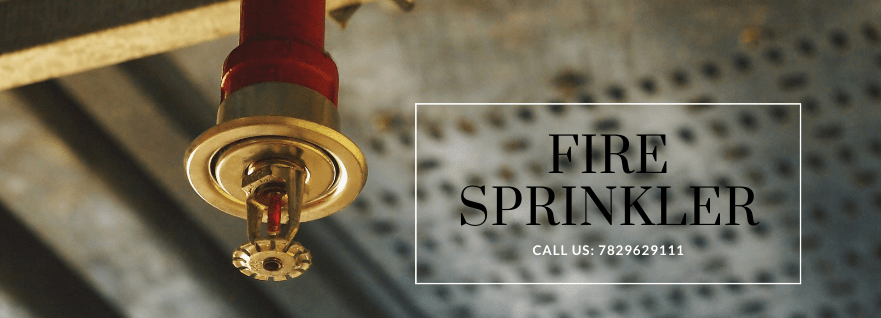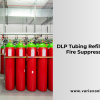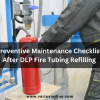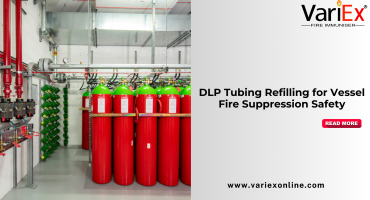![]()
Fire Immuniser
+91-7829629111
Email: info@variex.in
Varistor Technologies Pvt. Ltd.
Block-1, First Floor, Ardente Office One, Hoodi Circle, ITPL Main Road, Bengaluru, Karnataka 560048, IN
When Is A Fire Sprinkler System Required
Fire sprinkler systems are critical components of building safety infrastructure, designed to suppress or extinguish fires quickly, reducing damage and saving lives. Knowing when these systems are required is essential for ensuring compliance with regulations and enhancing overall fire safety standards. This comprehensive guide explores various factors that influence the necessity of fire sprinkler systems in different types of buildings.
Criteria | Description |
|---|---|
Building Occupancy Type | Residential, commercial, industrial, or institutional. |
- Residential: Apartments, condos, single-family homes. | |
- Commercial: Offices, retail spaces, restaurants. | |
- Industrial: Warehouses, manufacturing plants. | |
- Institutional: Schools, hospitals, nursing homes. | |
| Building Size and Height | Determined by square footage, number of stories, or building height. |
Thresholds set by building codes or local regulations. | |
Building Code Requirements | Compliance with NFPA standards and local building codes. |
- NFPA standards include NFPA 13, NFPA 101, NFPA 5000. | |
- Local regulations may include additional requirements or modifications. | |
| Special Hazards | Buildings with unique fire risks may require specialized fire protection measures. |
- Flammable materials: Storage or handling of flammable substances. | |
- Cooking facilities: Commercial kitchens with grease-laden environments. | |
- Hazardous processes: Industrial facilities with specialized manufacturing processes. |
Building Occupancy and Use:
The occupancy type and primary use of a building play a significant role in determining whether fire sprinkler systems are required. Here are some common occupancy categories and their associated requirements:
Residential Buildings:
- Multi-family residential buildings such as apartment complexes, dormitories, and condominiums often have specific requirements for fire sprinkler systems based on factors like building height, number of units, and local building codes.
- Single-family homes may also be subject to sprinkler system requirements in certain jurisdictions, particularly for new construction or homes with specific design features.
Commercial Buildings:
- Offices, retail spaces, restaurants, and other commercial establishments typically require fire sprinkler systems to protect occupants and property.
- Requirements may vary based on factors such as building size, occupancy load, and the presence of hazards like cooking equipment or flammable materials.
Industrial Buildings:
- Warehouses, manufacturing plants, and industrial facilities often have unique fire risks due to the presence of machinery, storage of hazardous materials, or specialized processes. Fire sprinkler systems may be required to mitigate these risks.
Institutional Buildings:
- Schools, hospitals, nursing homes, and other institutional buildings have high occupancy levels and a duty to protect vulnerable occupants. As such, fire sprinkler systems are typically mandated to ensure rapid fire suppression and evacuation.
Building Size and Height:
The size and height of a building are crucial factors in determining fire sprinkler requirements. Taller buildings and those with larger footprints present greater challenges for evacuation and fire suppression. As a result, many building codes establish thresholds based on square footage, number of stories, or height above which fire sprinkler systems become mandatory.
- Thresholds vary by jurisdiction and may be influenced by factors such as building occupancy, fire risk, and local building code requirements.
Building Code Compliance:
Building codes, including those established by organizations like the National Fire Protection Association (NFPA) and local authorities having jurisdiction (AHJs), dictate when fire sprinkler systems are required. Compliance with these codes is essential for ensuring the safety and integrity of buildings. Key considerations include:
NFPA Standards: NFPA publishes standards such as NFPA 13 (Standard for the Installation of Sprinkler Systems), NFPA 101 (Life Safety Code), and NFPA 5000 (Building Construction and Safety Code), which provide guidelines for fire protection system design and installation.
Local Regulations: Municipalities often adopt and enforce building codes tailored to local conditions and priorities. These regulations may include additional requirements or modifications based on regional hazards, climate, and building occupancy types.
Special Hazards and Considerations:
Certain buildings or occupancies present unique fire risks that may necessitate specialized fire protection measures, including fire sprinkler systems. Special hazards to consider include:
Flammable Materials: Buildings storing or handling flammable liquids, gases, or solids may require enhanced fire protection measures, including the installation of specialized sprinkler systems designed to address specific hazards.
Cooking Facilities: Commercial kitchens, restaurants, and food processing facilities often require fire sprinkler systems tailored to the unique fire risks associated with cooking equipment and grease-laden environments.
Hazardous Processes: Industrial facilities employing hazardous processes such as chemical manufacturing or metalworking may require fire sprinkler systems designed to suppress fires involving specialized materials or equipment.
Conclusion:
Understanding when fire sprinkler systems are required involves consideration of multiple factors, including building occupancy, size, height, building codes, and specific hazards. By adhering to applicable regulations, assessing fire risks, and implementing appropriate fire protection measures, architects, builders, and property owners can enhance the safety and resilience of buildings against the threat of fire. Investing in fire sprinkler systems not only protects lives and property but also contributes to the overall safety and sustainability of communities.
Frequently Asked Questions
No, fire sprinkler systems are not universally required in all buildings. Their necessity depends on factors such as building occupancy type, size, height, and local building codes.
Buildings with higher occupant loads, such as multi-story residential complexes, commercial establishments, industrial facilities, and institutional buildings like schools and hospitals, often require fire sprinkler systems.
Several factors influence the requirement for fire sprinkler systems, including building occupancy classification, size, height, local building codes, and the presence of special hazards such as flammable materials or cooking facilities.
In many jurisdictions, fire sprinkler systems are not mandatory in single-family homes. However, some regions may require them for new construction or homes with specific design features, such as being located in wildfire-prone areas.
Most commercial buildings, including offices, retail spaces, restaurants, and entertainment venues, are typically required to have fire sprinkler systems installed. Requirements may vary based on factors such as building size, occupancy load, and local regulations.
Final Say
At VariEx.in and VariexOnline.com, we specialize in supplying and installing top-quality fire fighting systems and equipment. From fire extinguishers to advanced suppression systems, we offer comprehensive solutions tailored to your needs. Our experienced team ensures precise installation and maintenance for optimal safety.
Trust VariEx for reliable fire protection. Contact us online or call 7829629111 to learn more.
"WHAT YOU CAN READ NEXT"
 Read more +24 November 2023 in Fire Extinguisher
Read more +24 November 2023 in Fire ExtinguisherWhat types of fire extinguishers are available for different fire classes?
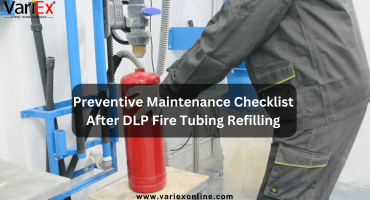 Read more +11 July 2025 in Fire Suppression
Read more +11 July 2025 in Fire Suppression

